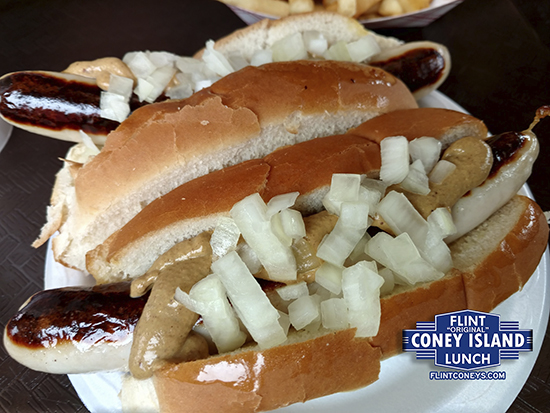
Online discussions can become rather heated when discussing what defines a “coney.” The most prominent misconception is that it’s made up of a hot dog in a bun with a sauce. But history, including the history of the Flint Coney, shows that the coney dogs themselves are the defining factor, without the sauce. While the Koegel Coney Frank might be thought of as a “frank made for coneys”, it and similar products around the country have historically been packaged and offered on restaurant menus using only the word “coney.” The “coney” is the dog itself, without the sauce, regardless of claims to the contrary.
The one development that would be important to the Coney Island hot dog is that a gentleman named Thomas Feltman immigrated from Germany in 1856 at the age of 15. By 1867 he was selling meat pies from a wagon on Coney Island when he came up with what he called the “Red Hot”. He then opened Feltman’s German Gardens, also on Coney Island, in about 1870. Feltman subsequently turned this into a very lucrative resort, with rides and restaurants, and by 1920 was serving an estimated five million customers each year.
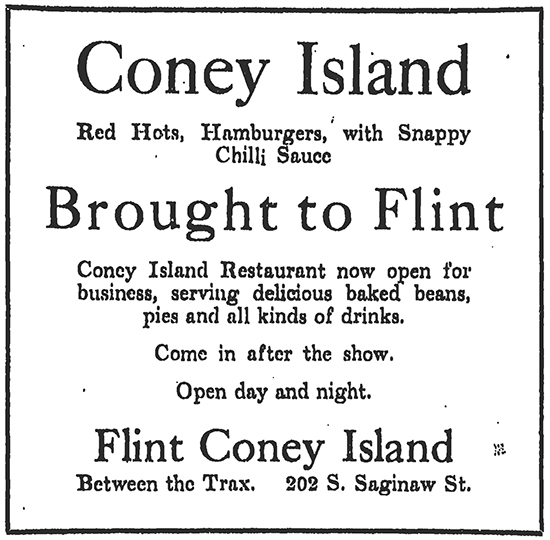
It’s been reported that Flint Coney founder Simion Brayan visited a lunch counter in Rochester, New York. This was likely while he was in Buffalo after his second immigration in 1921. He reportedly ordered what they called a “coney island”, then was quoted as saying it was “practically tasteless … unfit for a young man whose palate was accustomed to the hardy cuisine of southeast Europe … They used ground beef, a little chili powder, a little paprika, but it had no taste.” Thinking back to the Macedonian goulash he’d eaten back in Boufi, which contained beef heart and occasionally beef kidney, all in a beef suet base, he determined he could make a better coney sauce based on the heartiness of that Macedonian dish.
The region of Rochester, New York, was well-known for Feltman’s Red Hot, which is a frankfurter. This area is even more well-known for a more local Wiesswurst-like sausage offering known as a “White Hot.” The White Hot was originally made from lesser-quality and less expensive meats and fillers than the Red Hot, although they’re now made with higher-quality ingredients. Restaurants in the Rochester area serve both the Red Hot and the White Hot.
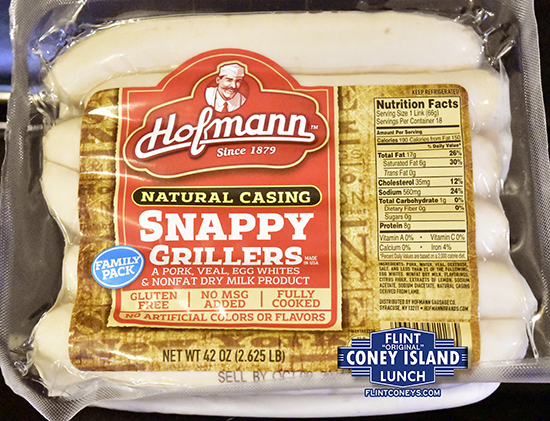
What’s most important to note about the White Hot is that, on some menus in Rochester and the Syracuse areas, it is sometimes referred to as a “coney”. But on others, it is not. For example, Heid’s of Liverpool outside Syracuse, opened in 1886 and at its current location since 1917, lists the White Hot as a “coney” on their menu. Also, the Hofmann Sausage Company in Syracuse has produced their “coney” White Hot since 1932, recently renaming the product on the label as the “Snappy Griller”. The sausage is not referred to as a “coney island”, but the implied genealogy of the name from Coney Island in New York City is there because of Feltman’s Red Hot being listed on those same restaurant menus in the area.
In 2015 a pair of Brooklyn natives, brothers Joe and Michael Quinn, revived the circa-1867 Feltman’s of Coney Island brand, in honor of their brother Jimmy, who was killed on 9/11. Five years after the reboot, the hot dogs and mustard were available in more than 2,000 Whole Foods Markets and Publix groceries nationwide.
So then, what defines a “coney island” or a “coney dog”, and what differentiates that from a “chili dog”? Is a Detroit Coney a “chili dog” because its sauce has a more wet consistency than the sauce for a “Flint Coney”? Not at all. The term “coney island” when referring to the end product is where culture comes into play. A “coney island restaurant” has traditionally been either owned or was founded by those of Macedonian, Greek or, more recently, Albanian decent. The “coney” those restaurants were initially created to serve has been a frankfurter or Vienna-style sausage with a lamb or sheep casing. The sauce, at least in the three main styles in Michigan (Jackson, Detroit, and Flint) has at some point been created using beef heart, although that’s no longer true for some older styles outside of Flint. In other parts of the country, coney island sauces are made with ground beef, but they’re also still rather savory like the styles in Michigan.

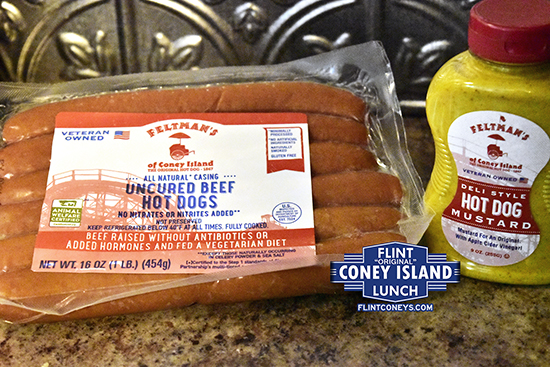
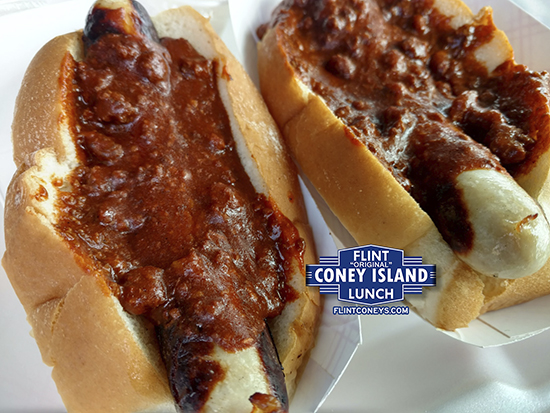
In the late ’40’s and early ’50’s we would buy coneys at Brown’s ( IGA ) general store in Bridgeport, NY. These sausages were on the plump side – not long and skinny and they were white. The current offerings from Hoffmann and others are a travesty if they call their product a coney – not even close except for the color.